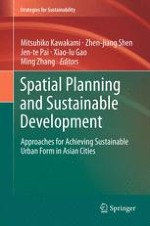2013 | OriginalPaper | Buchkapitel
7. Imagination and Practice of Collaborative Landscape, Ecological, and Cultural Planning in Taiwan: The Case of Taichung County and Changhua County
verfasst von : Li-wei Liu, Pei-yin Ko
Erschienen in: Spatial Planning and Sustainable Development
Verlag: Springer Netherlands
Aktivieren Sie unsere intelligente Suche, um passende Fachinhalte oder Patente zu finden.
Wählen Sie Textabschnitte aus um mit Künstlicher Intelligenz passenden Patente zu finden. powered by
Markieren Sie Textabschnitte, um KI-gestützt weitere passende Inhalte zu finden. powered by
